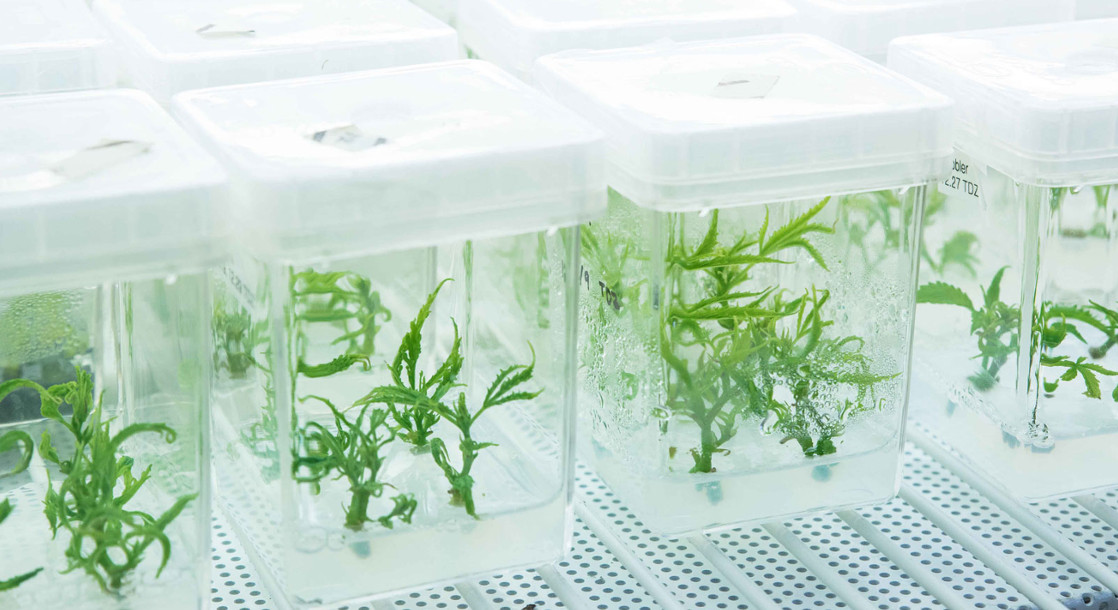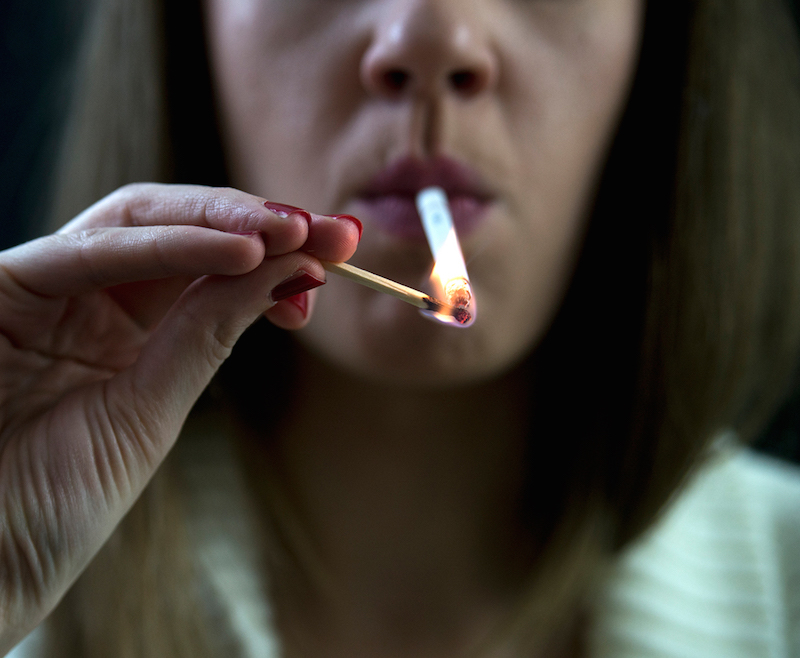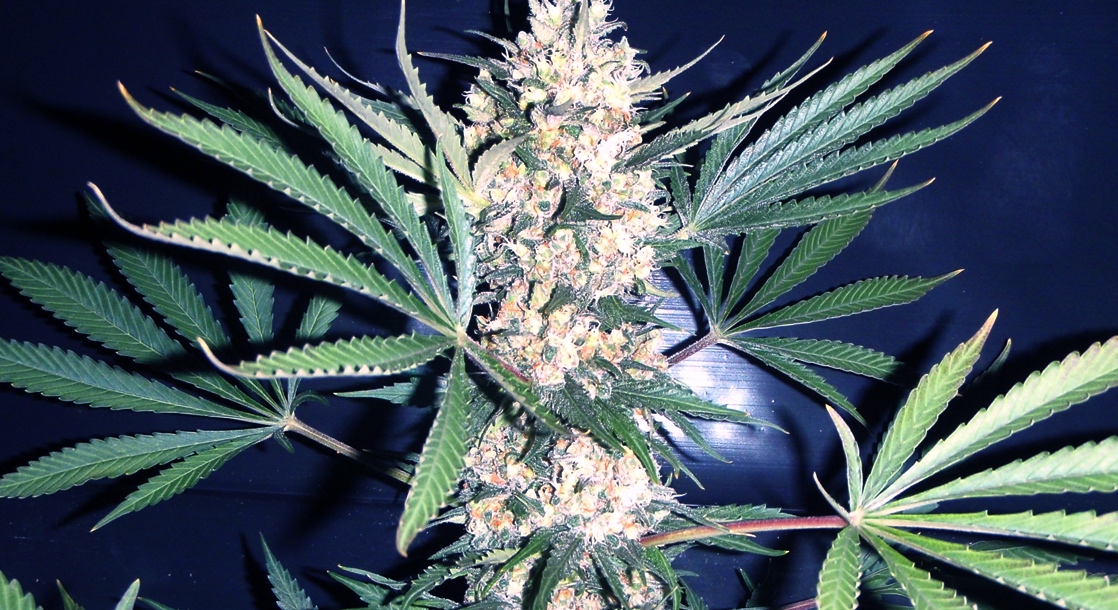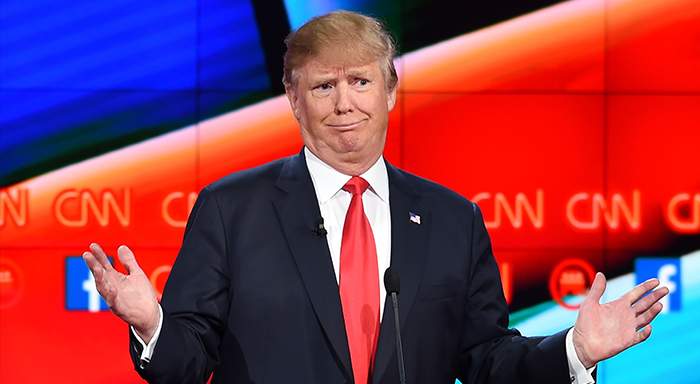Photos via Front Range Biosciences
California's new cannabis regulations mandate that all products pass pesticide testing, but that doesn't mean that every item on dispensary shelves this January will be up to par, yet. The legal adult-use (and medical) weed that goes on sale New Year’s Day will have been grown without the same standards that will be applied to cannabis cultivation moving forward. Earlier in 2017, for instance, KNBC-TV collected samples from 15 dispensaries throughout Southern California, and found that 93 percent of them tested positive for high levels of pesticides.
As California's cannabis market expands, the industry will need to take cues from other other agricultural markets to ensure product safety for consumers and to minimize environmental damages from pesticide use. Front Range Biosciences, a Colorado-based biotech firm, has developed a Clean Stock Program which embraces conventional agricultural technology to breed disease-free cannabis plants in a sterile environment (as opposed to growing cannabis clones from soil), with the hope of reducing the marijuana industry's reliance on pesticides.
MERRY JANE spoke to Dr. Jonathan Vaught, CEO of Front Range, to learn more about the program and what it could mean for the future of cannabis farming.
MERRY JANE: Why don't you give us some background on the program?
Vaught: We work with both hemp and marijuana farmers, and there are two parts to our business. The first is our clean stock nursery program, where we use tissue culture to clean up [cannabis] genetics and produce baby plants for farmers or growers. Depending on the type of grower, it can be marijuana or hemp; indoor, outdoor, greenhouse, etc. The second part is about varietal development — genomics — a tool to create better plants that we can deliver through the clean stock program. We've been operational in Colorado for 16 months, and we're working on setting up our first facility in California. It's the first clean stock program in cannabis.
What does it mean to take cues from conventional agricultural practices?
When you look at other vegetatively propagated [commercial] plants, you have a mother and you clone from them. You do this with ornamental plants, potato stock, berries, certain types of herbs like mint, hops, bananas, pineapples, orchids; the list goes on. Tons of plants are propagated from clones. In all of those industries, they use tissue culture to produce those clones as part of a clean stock program — that's the take-home message. The way it works is you use tissue culture to clean up the plant. It's a labor-intensive, lengthy process that takes specialized protocols and recipes for [plant] media formulations. You take the plant and and isolate healthy material in tissue culture lab, [and then] you grow it up in the tissue culture lab. That's how we maintain sterile plants with no fungus or pests. They're eliminated as part of the process. The only way to completely eliminate all those pathogens from plant is to use tissue culture, then take them out, and now you have clean plants to propagate. You get many millions of plants that are clean and healthy and pest free. So that's really the foundation for what we do.
Does the process for this entail genetic modification or engineering?
No, not at all. So tissue culture is just a very specialized growing environment that doesn't include any modification of the genes. All we're doing is a cloning in a very specialized manner and in a very specialized environment — so we can maintain cleanliness, sterility, and the removal of any pathogens or pests.

So you're simply propagating existing strains through pesticide-free measures?
Yes, definitely. It's a specialized form of propagation through tissue culture.
Can you explain tissue culture propagation? Why does that breed disease-free plants?
It's simple: you think about a plant and you've got leaves and branches from stem. Each one of those points is a node. Where you have a new branch, we take small pieces of the plant — a piece of the stem, and maybe one or two nodes from a branch. It might only be a half-inch or an inch long, and we cut that little piece, take it through a washing process, and put it into a tissue culture vessel, which can be a number of different container types. Imagine something like a small tupperware container.
Then you have a media formulation — kind of like the same type of thing you might have if you were growing [cannabis] in a pot or hydroponic. It's basically a set of nutrients, salt, a little bit of food, and things the plant needs to survive. But the media in tissue culture is very specialized. It doesn't have pathogens or bacteria; it's a very specific set of compounds that are clean and purified. The plant [then] sits in there, in this tiny tupperware container, and that's why tissue culture [propagation] is such an effective method in terms of scaling, because it's so small. Think [about a] one inch plant [in] a small tupperware container or jar; you can put tens of thousands of plants in a small space in a single room that's eight by ten or fifteen (feet)! It's a very effective way to produce lots and lots of baby plants that are all disease and pest free in a small place where they are secure, healthy, and happy.
This doesn't mean that a cannabis plant grown from tissue culture is fully resistant to pests though, right?
When a plant has been stressed, [and] when it has been put through different environments that cause it to stress and expose it to pathogens early on in its life, it's much more susceptible to diseases down the road. A stronger, healthier plant, while it's not [fully] resistant, will show more resistance coming out of our clean stock program, as opposed to a traditional [soil-grown] plant infested with aphids, thrips, and mites. These are bugs and they actually carry pathogens like bacteria and even viruses. So they reside on all types of plants, and depending on the crop and type of pest, they definitely affect the plant’s health. If you have a traditional plant, or a plant that didn't come out of tissue culture, and was cloned from a mother plant that's sitting in a greenhouse or indoor growing facility, it will have pests present and some of those pests are microscopic. Now you take a clone from that plant and these same pests will also be on that clone. The plant has already started off on wrong foot.
How could this revolutionize or change the cannabis industry going forward?
It provides a whole new level of transparency, quality, reproducibility, and reliability to nursery plants in this industry. It's going to allow farmers and growers to start off on the right foot so they can grow healthier pants from the beginning. As long as they follow the rules and don't use any pesticides that are not allowed and they follow good growing practices, they'll be able to grow plants much more effectively that will be safer for consumers because they [will] use fewer pesticides. It will really help raise the bar for the industry.











